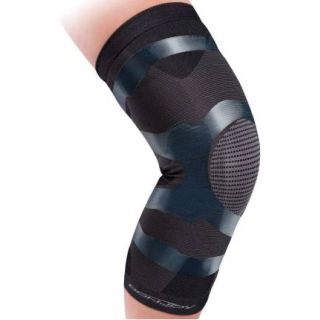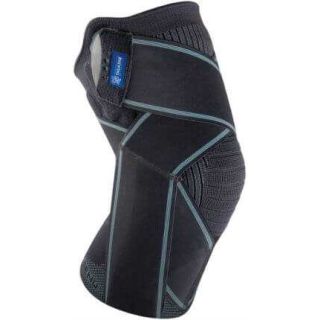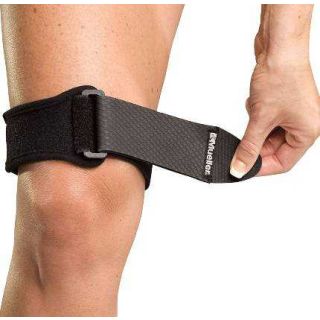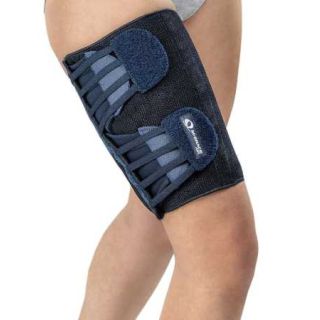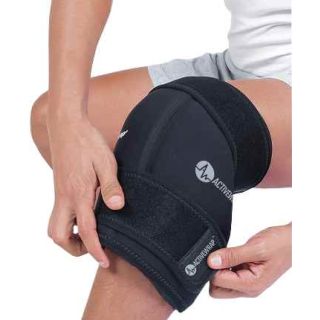Finding the Right Knee Brace for Iliotibial Band Syndrome: A Buyer's Practical Guide
Are you struggling with pain on the outside of your knee? Feeling frustrated by that nagging discomfort that stops you from running, cycling, or enjoying your favorite activities? You're not alone. Iliotibial Band Syndrome (ITBS) can be a real nightmare, but the right knee brace, band, or straps might be your ticket to knee pain relief and getting back to doing what you love.
What Exactly is ITBS? (And Why You Need the Right ITB Syndrome Brace)
Imagine a thick band of tissue running from your hip to your knee that's suddenly become your worst enemy. That's your iliotibial band, and when it gets irritated, every step can feel like a challenge. A good knee brace isn't just a piece of fabric—it's your personal support system.
How to Choose the Perfect ITBS Knee Brace: What Really Matters
1. Compression is King
Look for braces that offer:
- Graduated compression to reduce muscle fatigue
- Breathable fabrics that won't make you sweat
- Comfortable fit that doesn't feel like a tourniquet
2. Support Where It Counts
The best braces provide:
- Lateral knee stability
- Reduced friction
- Strategic pressure distribution
3. Comfort Factors That Make a Difference
Key comfort features include:
- Lightweight design
- Moisture-wicking materials
- No-slip grip
- Minimal bunching or rolling
Top ITB Syndrome Knee Brace Styles for Your Needs
For the Weekend Warrior
If you're an occasional runner or fitness enthusiast:
- Lightweight compression brace
- Affordable option
- Provides basic support
- Easy to slip on and off
- For the Serious Athlete
When you need maximum support:
- Hinged design for advanced stability
- Enhanced compression zones
- Professional-grade materials
- Customizable fit
For Ongoing Pain Management
If you're dealing with persistent discomfort:
- Medical-grade compression
- Additional stabilization features
- Recommended by physical therapists
- Longer-term wear capabilities
Red Flags: What to Avoid When Buying
❌ Super Cheap Braces
- Lack proper support
- Poor-quality materials
- Won't provide real relief
❌ One-Size-Fits-All Solutions
- Ineffective for your specific body
- Potential to cause more harm
- Uncomfortable fit
Price Points: What to Expect
Budget Option: $20 - $40
- Basic compression
- Minimal features
- Good for occasional use
Mid-Range: $40 - $80
- Better materials
- More targeted support
- Improved durability
Premium: $80 - $150
- Professional-grade design
- Advanced compression technology
- Recommended for serious athletes
Pro Tips for Brace Shopping
- Measure Your Knee Circumference
- Use a flexible tape measure
- Measure at the center of your kneecap
- Check brand-specific sizing charts
- Consider Your Primary Activity
- Running braces differ from cycling braces
- Look for sport-specific designs
- Read Real User Reviews
- Look for verified purchasers
- Pay attention to long-term wear experiences
When to Wear Your Brace
- During workouts
- While recovering from injury
- As a preventative measure
- During rehabilitation exercises
Beyond the Brace: Quick Recovery Tips
A brace isn't a miracle cure. Combine it with:
- Proper stretching
- Strength training
- Rest and recovery
- Professional medical advice
The Bottom Line
Your knee brace should feel like a supportive friend—there when you need it, comfortable, and ready to help you move with confidence. Don't just buy a brace, invest in your mobility and pain-free future.
Final Advice
- Start with professional consultation
- Don't compromise on quality
- Listen to your body
- Be patient with your recovery
Ready to take the first step towards pain-free movement? The right ITBS knee brace is waiting to support you. In addition to foam rollers and stretching exercises, cold therapy, in the form of a knee ice pack or ice wrap, can also provide benefit.
 Details$93.99 $84.99
Details$93.99 $84.99 Details$87.99 $74.99
Details$87.99 $74.99 Details$23.99 $17.99
Details$23.99 $17.99 Details$30.99 $30.99
Details$30.99 $30.99 Details$89.99 $81.99
Details$89.99 $81.99 Details$14.99
Details$14.99 Details$54.99 $37.99
Details$54.99 $37.99
